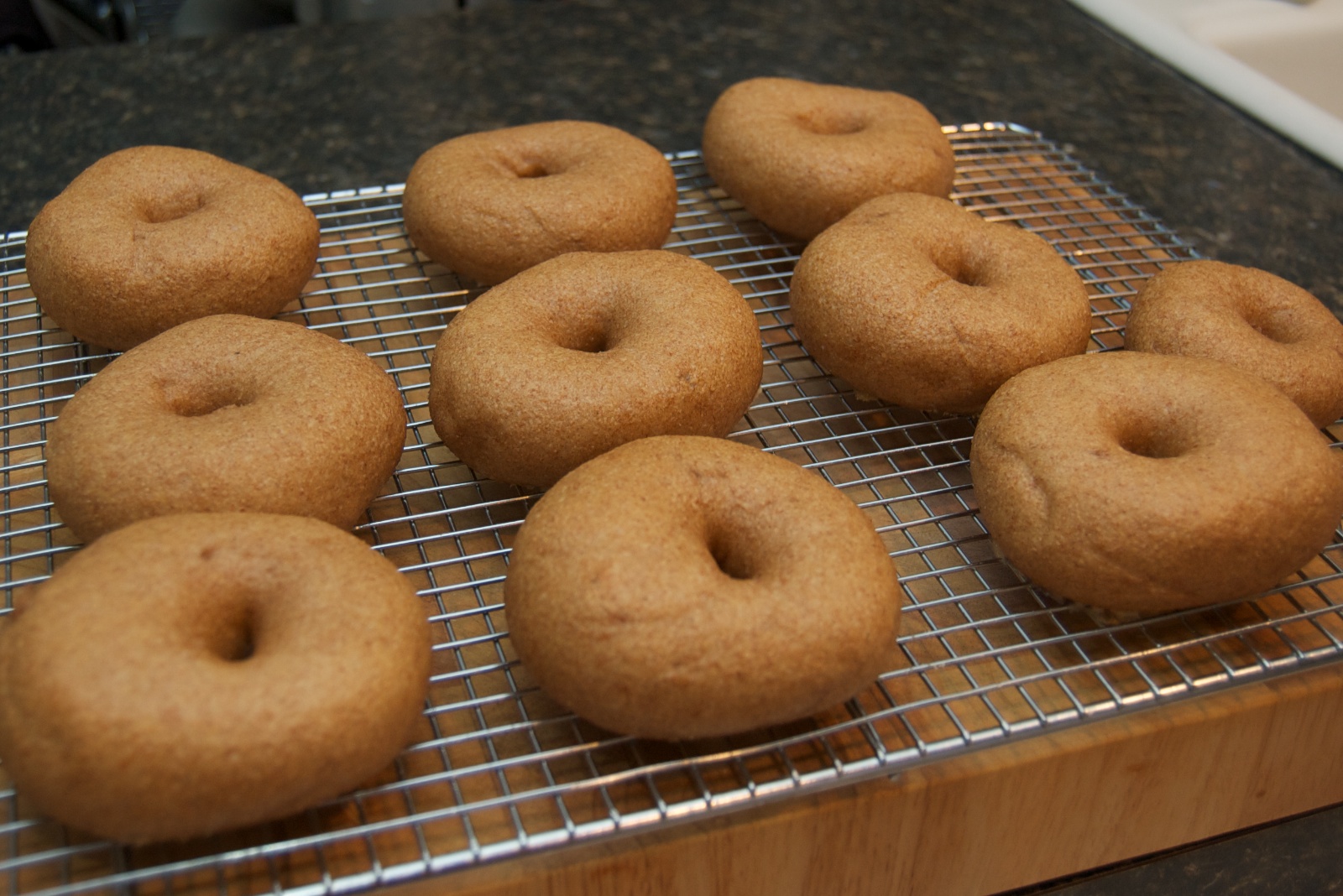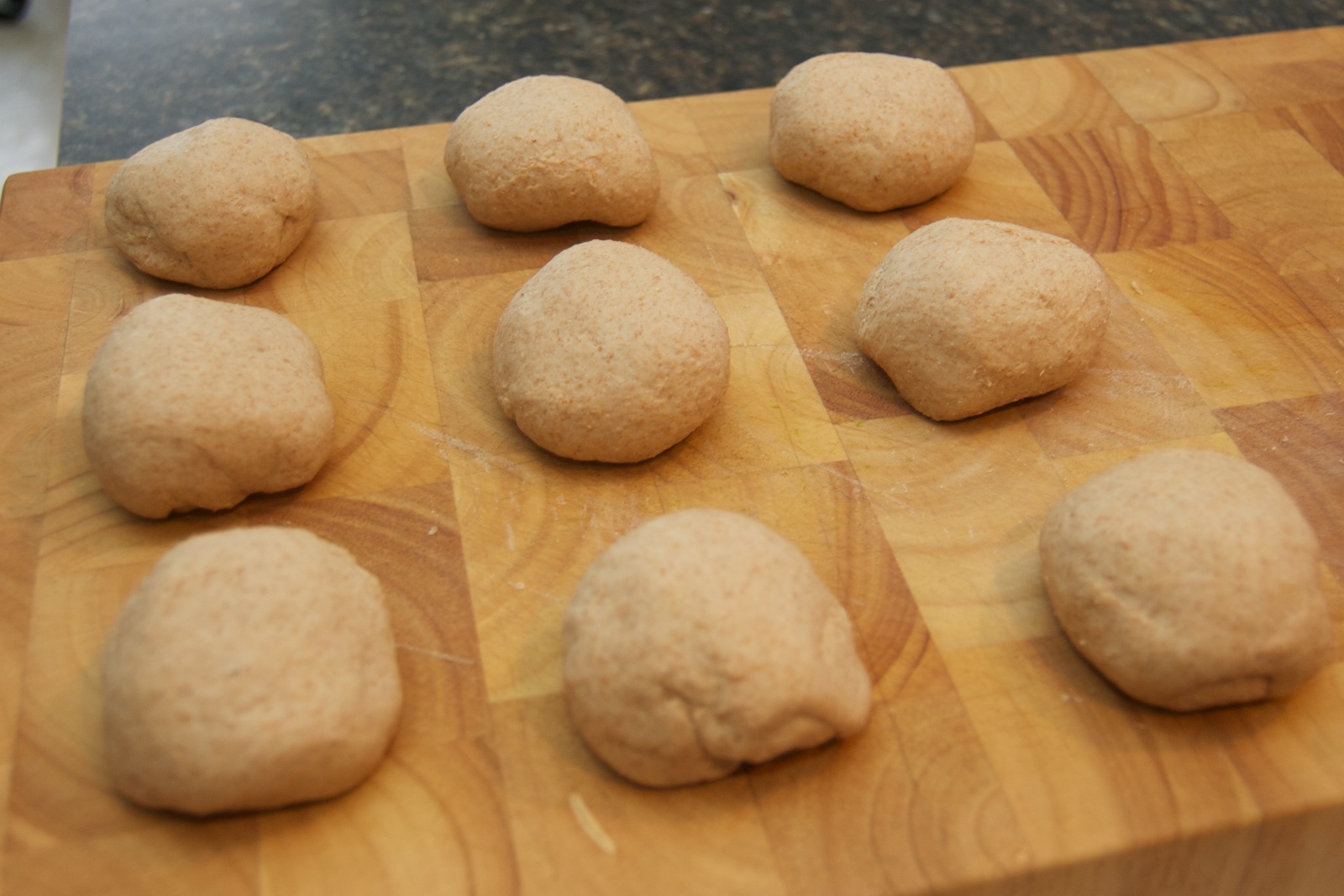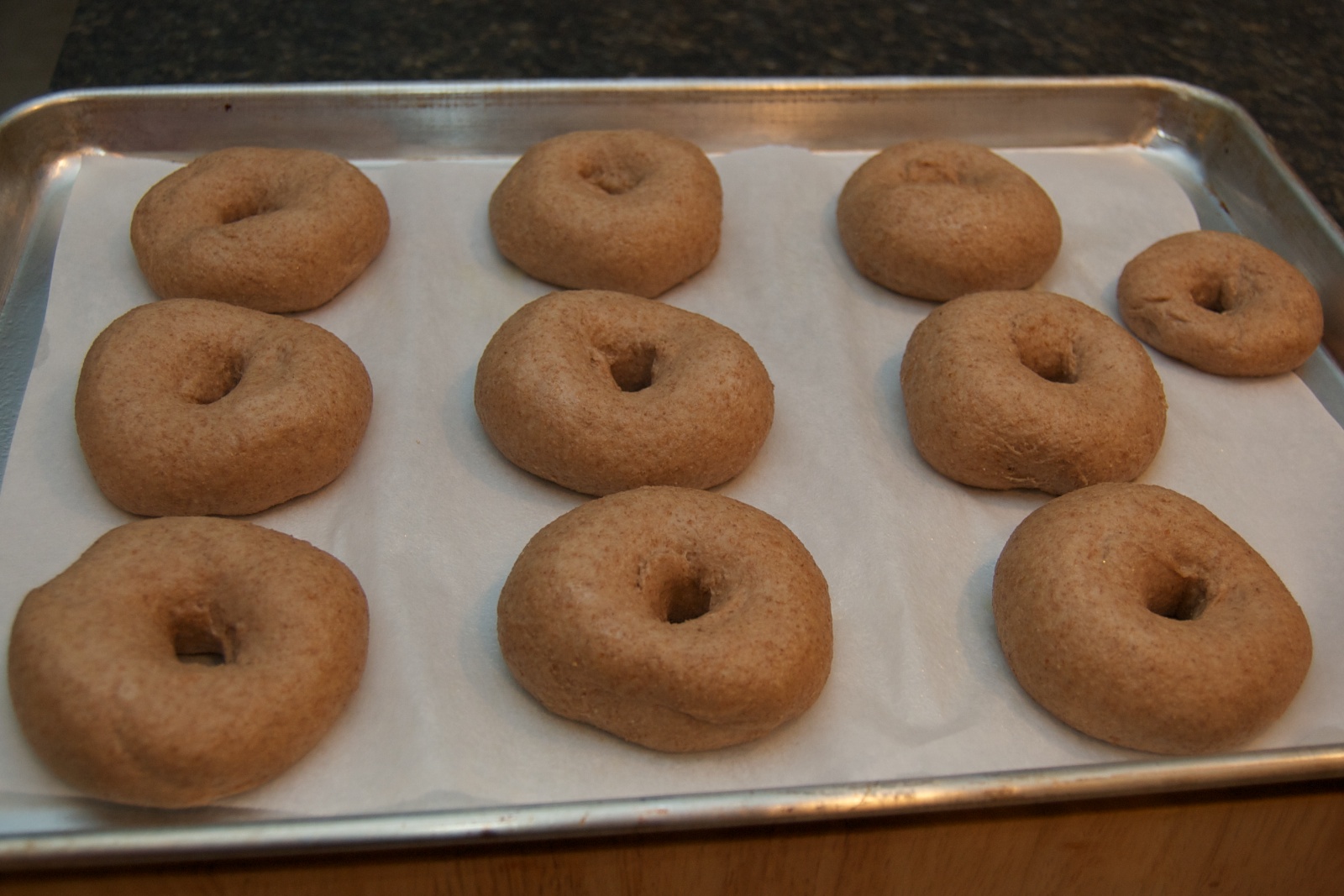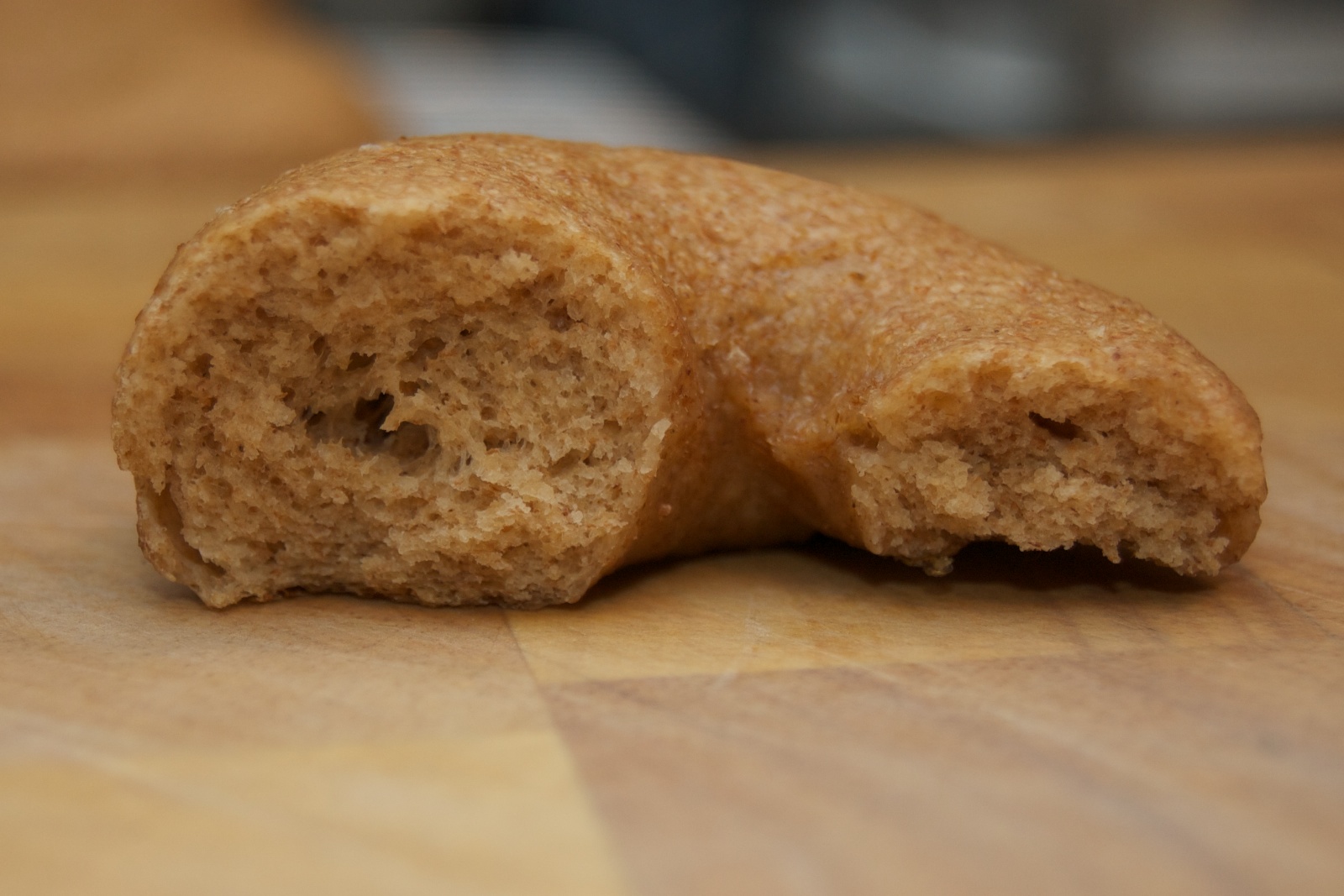Whole grain bagel #1

My regular bagel recipe is excellent and makes a pretty authentic New York-style water bagel. But most of my other baked goods like whole wheat and oat dinner rolls and 9-grain bread are whole-grain and my bagels are, well, very white. This is attempt #1 at making a good whole grain bagel. There's a whole mix of techniques including a soaker, poolish and retarded dough in order to get the most flavor and best texture out of a 100 % whole grain bagel. You pretty much have to start two days before you want bagels, so it's not exactly a quick recipe.
And, I have to say, it worked really well. It's remarkably light for a 100 % whole grain bread and has a nice flavor. I'm going to make these instead of the white bagels from now on.
Soaker:
- 4.5 oz. whole wheat flour
- 5 oz. water at 70°F
Prepare two days before you plan to make the bagels. Mix the whole wheat flour and water and let sit at room temperature until the next day when you make the dough. This is for flavor as the wheat flour will begin to ferment.
Poolish:
- 0.055 oz. instant yeast (1/2 tsp.)
- 2 oz. whole wheat flour
- 2.5 oz. King Arthur white whole wheat flour (high gluten winter wheat flour)
- 5 oz. water at 70°F
Prepare two days before you plan to make the bagels. Mix the ingredents together until the flour is fully hydrated but no longer. Let sit at room temperature for 2 to 4 hours, then refrigerate overnight. The poolish is for texture, as the gluten in the flour will be broken down.
Dough:
- 8.5 oz. King Arthur white whole wheat flour (high gluten winter wheat flour)
- 0.027 oz. instant yeast (1/4 tsp.)
- 0.300 oz. salt
- 0.250 oz. Barley malt syrup
Take the poolish out of the refrigerator 1 hour before making the dough.
Mix all of the ingredients together in the mixer bowl. I used a combination of the dough hook and some hand kneading to incorporate all of the dry flour into the dough. I also had to add a little water.
Using the dough hook knead for 6 to 8 minutes. The dough should not be sticky or tacky; if it is sticky add a little more flour.
Divide the dough into 3.0 oz. portions for small bagels. It should make 9. Cover with a damp kitchen towel and let rest for 20 minutes.
 Form the balls into bagel shape; for small bagels using your thumb to make a hole in the middle and then turning it to form the proper shape works well.
Form the balls into bagel shape; for small bagels using your thumb to make a hole in the middle and then turning it to form the proper shape works well.
Line a sheet pan with parchment paper and lightly oil. Place the bagels on the sheet pan and spritz with oil. Cover with plastic wrap and let sit for 30 minutes.
Do a float test by placing a bagel in a pan of water. It should float to the top within 10 seconds. If it doesn't, pat it dry and let the bagels sit for another 15 minutes and repeat the float test. The float test determines if the yeast has produced enough carbon dioxide embedded within the dough before retarding, since yeast doesn't work well in cold temperatures.
When the dough passes the float test, cover and refrigerate overnight, or for up to 2 days. You could skip the retarding and boil and bake now, especially since the dough is made from a soaker and poolish.

When ready to cook, preheat the oven to 500°F. Bring a large pot of water to a boil.
Boil the bagels for 1 minute, flip over, and boil for 1 more minute. Place on sheet pan with parchment paper, lightly oiled, and dusted with semolina flour. It can be the same one you refrigerated the bagels on.
This is when you'd add salt, seeds, rehydrated dehydrated garlic or onions, etc. for flavored bagels.
Bake for 5 minutes. Rotate the sheet pan 180°, reduce the heat to 450°F, and bake for 5 more minutes.
Nice crumb:
